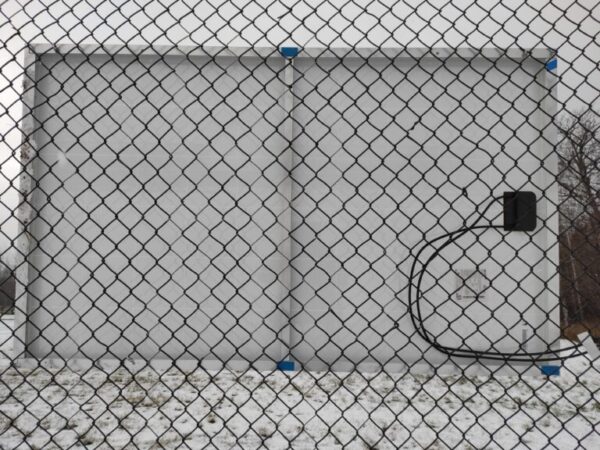From pv magazine Global
A US-Canadian group of scientists has suggested using existing fences in animal farms as a low-cost racking solution for solar modules.
“This is perhaps the lowest-cost approach to racking,” the research’s corresponding author, Joshua M. Pearce, told pv magazine. “What we did is show that at least one PV module between two upright posts is mechanically acceptable for every type of conventional farm fencing. In this case, the racking is almost free.”
The researchers identified three main typologies of fencing: fences based on multiple battens placed between the main posts to support the fence wire; fences using posts on which the fence wires or mesh are attached; and fences utilizing prefabricated meshes of various designs suitable to the need and sometimes aesthetics. “Normally for fences, high tensile steel wires and mild steel wire are predominantly used,” they noted. “Their diametric dimensions are generally 4 mm, 3.15 mm and 2.5 mm for high tensile (HT) wire and mild steel wires.”
In order to ascertain if an existing fence may be used for solar deployment, developers should first investigate if the fence can withstand a certain wind load in a specific location with the addition of PV panels, as well as the region’s topological, geographical and climatic challenges. In this regard, the group said special attention should be given to line post size and spacing play, adding that the main factors to be carefully considered are the height of the fence, footing depth, design and size of mesh fabric, as well as the material strength of the posts.
The scientists also explained that wind load measurements should be taken via the Main Wind Force Resisting System (MWFRS) and Components & Cladding (C&C) procedures, as well as by the Open Source Wind Load Calculator, which is a tool used to calculate the wind load on a fence in a given region in the United States. “The program outputs the wind loads in terms of the base shear force in pound force (lbf) and base moment in feet pound force (ft- lbf),” they specified, adding that they calculated for a range of wind loads from 80 mph to 150 mph (129 km/h to 241 km/h).
The academics conducted a series of field tests using three Cheetah HC 72 M monocrystalline PERC panels manufactured by China-based JinkoSolar. They said their installation was performed quickly by two people, with the mounting of a single module requiring seven minutes and a total of four zip-ties.

They also conducted a series of simulations for retrofitting existing farm fencing for a wide range of farms, including sheep, goats, pigs, cows, and alpaca, and found solar projects based on the proposed approach would be economically viable in the United States.
“The cost of the racking retrofit is only the cost of four stainless steel zip ties per module, which can be purchased in 120 packs for $11 or about 37 cents per module,” they explained. “If the modules range in power from 250 to 500 W then the racking cost of an existing fence is less than a penny a Watt.”
Pearce said the research group also laid out what would be an optimal inverter strategy depending on how much energy a farmer would need. “Small-scale farmers can use the free ebook to set up the design for the system, do the install with metal zip ties themselves, and then only need to call an electrician to attach to the grid,” he concluded.
The scientists presented their findings in the paper “The potential for fencing to be used as low-cost solar photovoltaic racking,” published in Solar Energy. “Future work is necessary to determine the full scope of the benefits of this approach of vertical PV agricultural fencing on a global scale,” they said, looking forward to how to improve the proposed methodology.
The research team comprises academics from the Western University in Canada and the Michigan Technological University in the United States.

This content is protected by copyright and may not be reused. If you want to cooperate with us and would like to reuse some of our content, please contact: editors@pv-magazine.com.









By submitting this form you agree to pv magazine using your data for the purposes of publishing your comment.
Your personal data will only be disclosed or otherwise transmitted to third parties for the purposes of spam filtering or if this is necessary for technical maintenance of the website. Any other transfer to third parties will not take place unless this is justified on the basis of applicable data protection regulations or if pv magazine is legally obliged to do so.
You may revoke this consent at any time with effect for the future, in which case your personal data will be deleted immediately. Otherwise, your data will be deleted if pv magazine has processed your request or the purpose of data storage is fulfilled.
Further information on data privacy can be found in our Data Protection Policy.